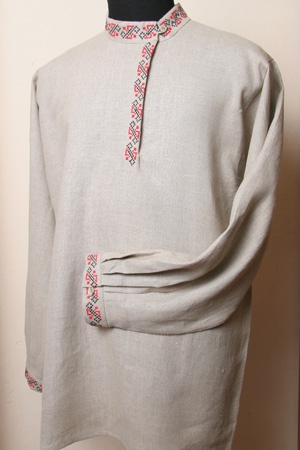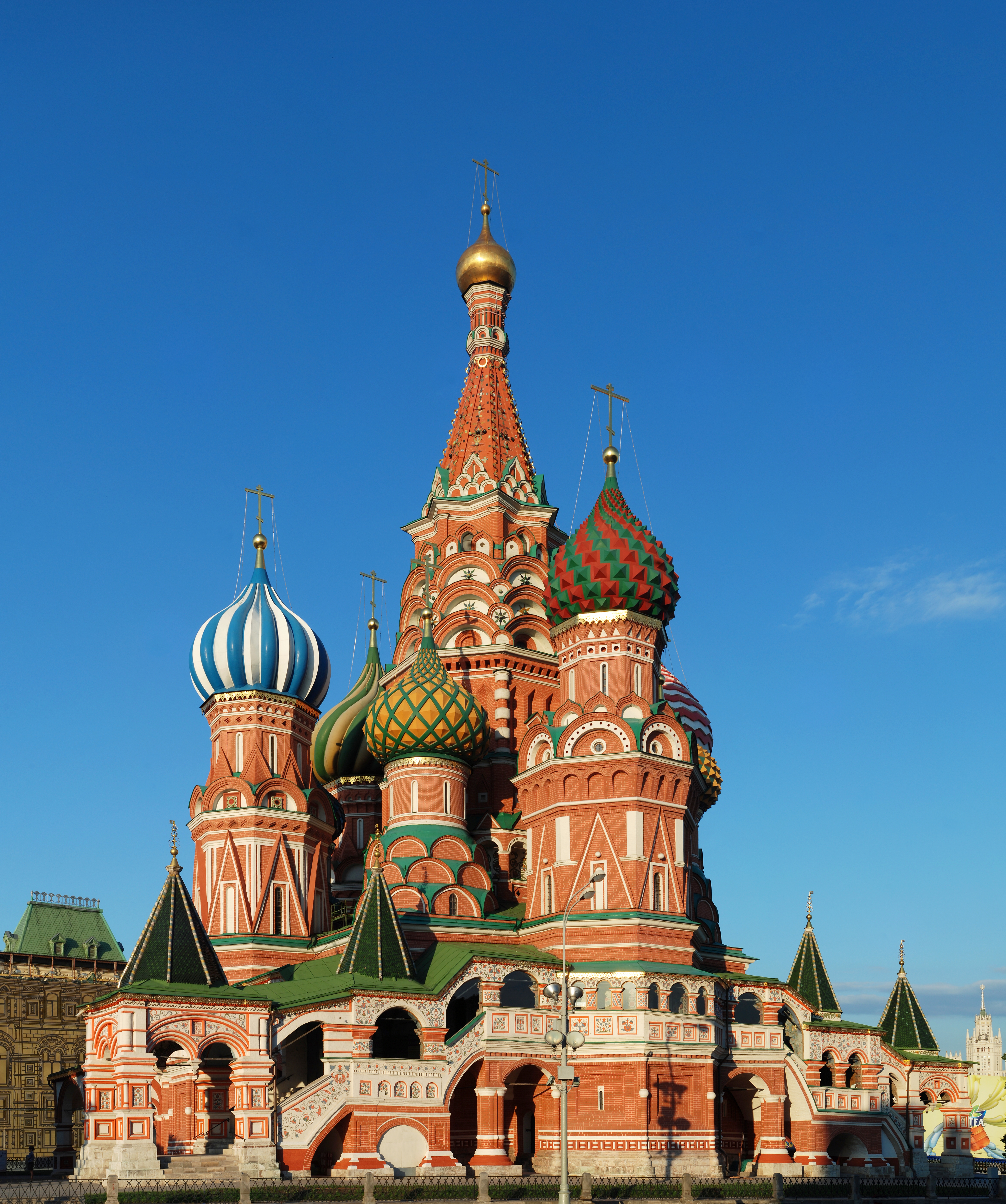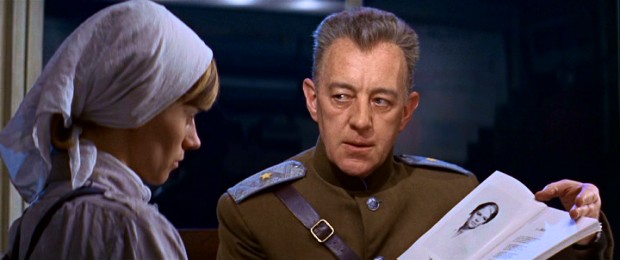|
Kosovorotka
A kosovorotka ( rus, косоворо́тка, p=kəsəvɐˈrotkə), also known in the West as a Russian peasant shirt or Tolstoy shirt (''tolstovka''). The name comes from the Russian language, Russian phrase ''kosoy vorot'' (косой ворот), meaning a “skewed collar”. It was worn by all peasants in Russia — men, women, and babies — in different styles for every-day and festive occasions. Easy to make from one sheet of fabric, this garment is traditional for Russians, Mordvins, Mordovins, Setos, Komi peoples, Komi-Permyaks and other ethnic groups in Russia, as well as in some regions of Moldova. Description A ''kosovorotka'' is a traditional Russian shirt, long sleeved and reaching down to the mid-thigh. The shirt is not buttoned all the way down to the hem, but has several buttons at the collar (unfastened when the garment is pulled over the wearer's head), though these are positioned off to one side (regional styles vary between left and right), instead of cen ... [...More Info...] [...Related Items...] OR: [Wikipedia] [Google] [Baidu] |
Russian Culture
Russian culture (russian: Культура России, Kul'tura Rossii) has been formed by the nation's history, its geographical location and its vast expanse, religious and social traditions, and Western culture, Western influence. Russian Russian literature, writers and Russian philosophy, philosophers have played an important role in the development of European thought. The Russians have also greatly influenced classical music, Russian ballet, ballet, Sport in Russia, sport, List of Russian artists, painting, and Cinema of Russia, cinema. The nation has also made pioneering contributions to Timeline of Russian inventions and technology records, science and technology and space exploration. History Language and literature Russia's 160 ethnic groups speak some 100 languages. According to the 2002 census, 142.6 million people speak Russian language, Russian, followed by Tatar language, Tatar with 5.3 million and Ukrainian language, Ukrainian with 1.8 mil ... [...More Info...] [...Related Items...] OR: [Wikipedia] [Google] [Baidu] |
Folk Art
Folk art covers all forms of visual art made in the context of folk culture. Definitions vary, but generally the objects have practical utility of some kind, rather than being exclusively decorative art, decorative. The makers of folk art are typically trained within a popular tradition, rather than in the fine art tradition of the culture. There is often overlap, or contested ground with naive art, 'naive art'. "Folk art" is not used in regard to traditional societies where ethnographic art continue to be made. The types of objects covered by the term "folk art" vary. The art form is categorised as "divergent... of cultural production ... comprehended by its usage in Europe, where the term originated, and in the United States, where it developed for the most part along very different lines." For a European perspective, Edward Lucie-Smith described it as "Unsophisticated art, both fine and applied, which is supposedly rooted in the collective awareness of simple people. ... [...More Info...] [...Related Items...] OR: [Wikipedia] [Google] [Baidu] |
Russian Inventions
This timeline of Russian Innovation encompasses key events in the history of technology in Russia, from the Grand Duchy of Moscow up to the Russian Federation. The entries in this timeline fall into the following categories: * indigenous inventions, like airliners, AC transformers, radio receivers, television, artificial satellites, ICBMs * uniquely Russian products, objects and events, like Saint Basil's Cathedral, Matryoshka dolls, Russian vodka * products and objects with superlative characteristics, like the Tsar Bomba, the AK-47, and the Typhoon-class submarine * scientific and medical discoveries, like the periodic law, vitamins and stem cells This timeline includes scientific and medical discoveries, products and technologies introduced by various peoples of Russia and its predecessor states, regardless of ethnicity, and also lists inventions by naturalized immigrant citizens. Certain innovations achieved internationally may also appear in this timeline in cases where the ... [...More Info...] [...Related Items...] OR: [Wikipedia] [Google] [Baidu] |
19th-century Fashion
The nineteenth century marks the period beginning January 1, 1801 and ends December 31, 1900. It was a period of dramatic change and rapid socio-cultural advancement, where society and culture are constantly changing with advancement of time. The ''Fashion of the 19th Century'' strongly reflected the technology, art, politics and culture of the time of which were highly influential to the styles and silhouettes. For women, fashion was an extravagant and extroverted display of the female silhouette with corset pinched waistlines, bustling full-skirts that flowed in and out of trend and decoratively embellished gowns. For men, three piece suits were tailored for usefulness in business as well as sporting activity. The fashion in this article includes styles from the 19th Century through a Western context - namely Europe and North America. Historical overview and fashions Early 1800s (1800-1829) Technological innovations At the turn of the 18th century, the Western world � ... [...More Info...] [...Related Items...] OR: [Wikipedia] [Google] [Baidu] |
Doctor Zhivago (film)
''Doctor Zhivago'' () is a 1965 Epic film, epic Historical drama, historical romance film directed by David Lean with a screenplay by Robert Bolt, based on Doctor Zhivago (novel), the 1957 novel by Boris Pasternak. The story is set in Russia during World War I and the Russian Civil War. The film stars Omar Sharif in the title role as Yuri Zhivago, a married physician and poet whose life is altered by the Russian Revolution and subsequent civil war, and Julie Christie as his love interest Lara Antipova. Geraldine Chaplin, Tom Courtenay, Rod Steiger, Alec Guinness, Ralph Richardson, Siobhán McKenna, and Rita Tushingham play supporting roles. While immensely popular in the Western world, West, Pasternak's book was banned in the Soviet Union for decades. For this reason, the film could not be made in the Soviet Union and was instead filmed mostly in Spain. It was an international co-production between Metro-Goldwyn-Mayer and Italian producer Carlo Ponti. Contemporary critics wer ... [...More Info...] [...Related Items...] OR: [Wikipedia] [Google] [Baidu] |
David Lean
Sir David Lean (25 March 190816 April 1991) was an English film director, producer, screenwriter and editor. Widely considered one of the most important figures in British cinema, Lean directed the large-scale epics ''The Bridge on the River Kwai'' (1957), ''Lawrence of Arabia'' (1962), ''Doctor Zhivago'' (1965), and ''A Passage to India'' (1984). He also directed the film adaptations of two Charles Dickens novels, '' Great Expectations'' (1946) and '' Oliver Twist'' (1948), as well as the romantic drama ''Brief Encounter'' (1945). Originally a film editor in the early 1930s, Lean made his directorial debut with 1942's '' In Which We Serve'', which was the first of four collaborations with Noël Coward. Beginning with '' Summertime'' in 1955, Lean began to make internationally co-produced films financed by the big Hollywood studios; in 1970, however, the critical failure of his film ''Ryan's Daughter'' led him to take a fourteen-year break from filmmaking, during which he pla ... [...More Info...] [...Related Items...] OR: [Wikipedia] [Google] [Baidu] |
Yuri Zhivago
Yuri Andreievich Zhivago is the protagonist and title character of the 1957 novel ''Doctor Zhivago'' by Boris Pasternak. Yuri Zhivago, a doctor and poet, is sensitive nearly to the point of mysticism. Zhivago's idealism and principles stand in contrast to the successive brutality of World War I, the February and October Revolutions, the subsequent Russian Civil War, and the Red Terror. A major theme of the novel is how mysticism and idealism are destroyed by both the Bolsheviks and the White Army alike, as both sides commit horrible atrocities. Zhivago is married to Tonya Gromeko, his adoptive sister, with whom he has a son and a daughter. He has an affair with Lara Antipova, wife of Pasha Antipov/Strelnikov, who bears him a daughter. Much of Zhivago's poetry is inspired by Lara. In other media Yuri Zhivago has been portrayed by actors such as Omar Sharif in the 1965 film, Hans Matheson in the 2002 television series, and Oleg Menshikov Oleg Evgenyevich Menshikov, PAR (russ ... [...More Info...] [...Related Items...] OR: [Wikipedia] [Google] [Baidu] |
Omar Sharif
Omar Sharif ( ar, عمر الشريف ; born Michel Yusef Dimitri Chalhoub , 10 April 193210 July 2015) was an Egyptian actor, generally regarded as one of his country's greatest male film stars. He began his career in his native country in the 1950s, but is best known for his appearances in British, American, French, and Italian productions. His career encompassed over 100 films spanning 50 years, and brought him many accolades including three Golden Globe Awards and a César Award for Best Actor. Sharif played opposite Peter O'Toole as Sherif Ali in the David Lean epic ''Lawrence of Arabia'' (1962), which earned him an Academy Award nomination for Best Supporting Actor, and portrayed the title role in Lean's ''Doctor Zhivago'' (1965), earning him the Golden Globe for Best Actor – Motion Picture Drama. He continued to play romantic leads, in films like '' Funny Girl'' (1968) and ''The Tamarind Seed'' (1974), and historical figures like the eponymous characters in ''Genghis ... [...More Info...] [...Related Items...] OR: [Wikipedia] [Google] [Baidu] |
Leo Tolstoy
Count Lev Nikolayevich TolstoyTolstoy pronounced his first name as , which corresponds to the romanization ''Lyov''. () (; russian: link=no, Лев Николаевич Толстой,In Tolstoy's day, his name was written as in pre-reformed Russian. ; ), usually referred to in English as Leo Tolstoy, was a Russian writer who is regarded as one of the greatest authors of all time. He received nominations for the Nobel Prize in Literature every year from 1902 to 1906 and for the Nobel Peace Prize in 1901, 1902, and 1909; the fact that he never won is a major controversy. Born to an aristocratic Russian family in 1828, Tolstoy's notable works include the novels ''War and Peace'' (1869) and ''Anna Karenina'' (1878), often cited as pinnacles of realist fiction. He first achieved literary acclaim in his twenties with his semi-autobiographical trilogy, ''Childhood'', '' Boyhood'', and ''Youth'' (1852–1856), and '' Sevastopol Sketches'' (1855), based upon his experiences in ... [...More Info...] [...Related Items...] OR: [Wikipedia] [Google] [Baidu] |
Russian Language
Russian (russian: русский язык, russkij jazyk, link=no, ) is an East Slavic languages, East Slavic language mainly spoken in Russia. It is the First language, native language of the Russians, and belongs to the Indo-European languages, Indo-European language family. It is one of four living East Slavic languages, and is also a part of the larger Balto-Slavic languages. Besides Russia itself, Russian is an official language in Belarus, Kazakhstan, and Kyrgyzstan, and is used widely as a lingua franca throughout Ukraine, the Caucasus, Central Asia, and to some extent in the Baltic states. It was the De facto#National languages, ''de facto'' language of the former Soviet Union,1977 Soviet Constitution, Constitution and Fundamental Law of the Union of Soviet Socialist Republics, 1977: Section II, Chapter 6, Article 36 and continues to be used in public life with varying proficiency in all of the post-Soviet states. Russian has over 258 million total speakers worldwide. ... [...More Info...] [...Related Items...] OR: [Wikipedia] [Google] [Baidu] |


.jpg)




